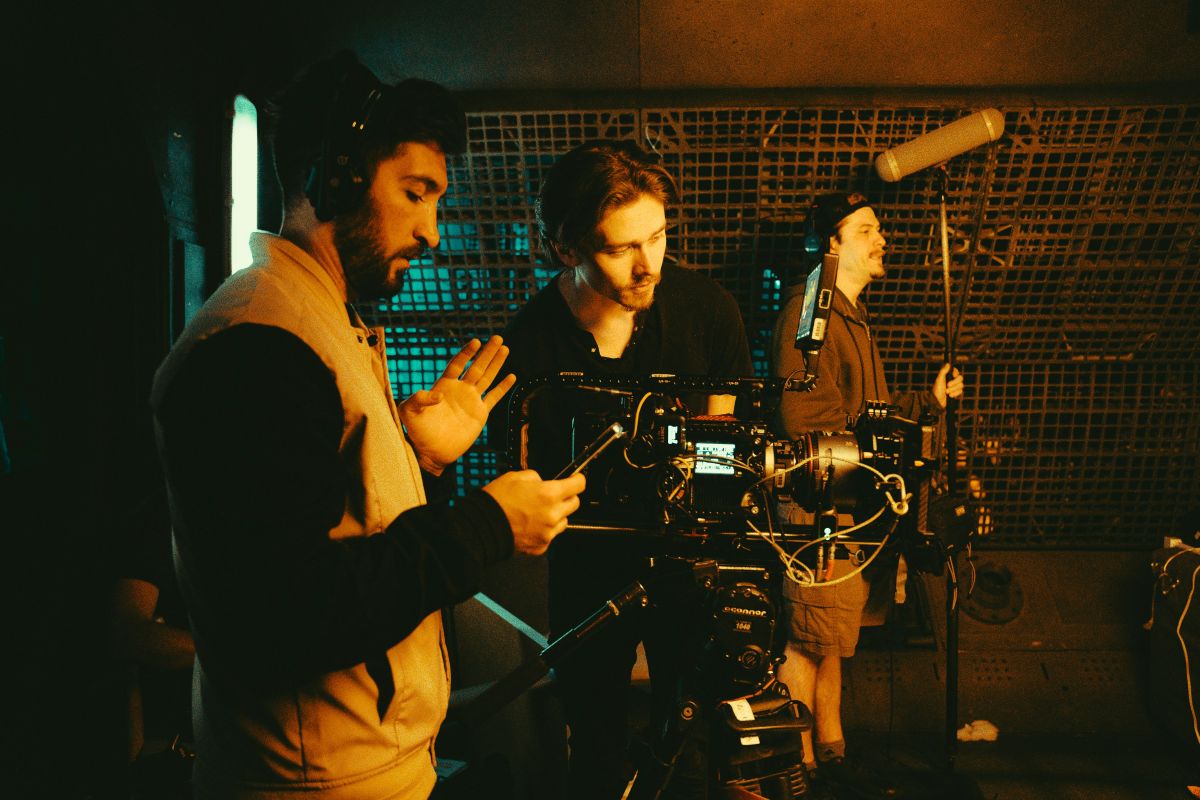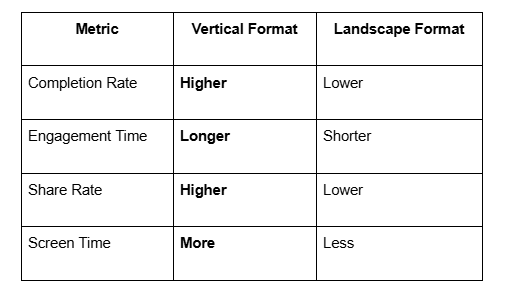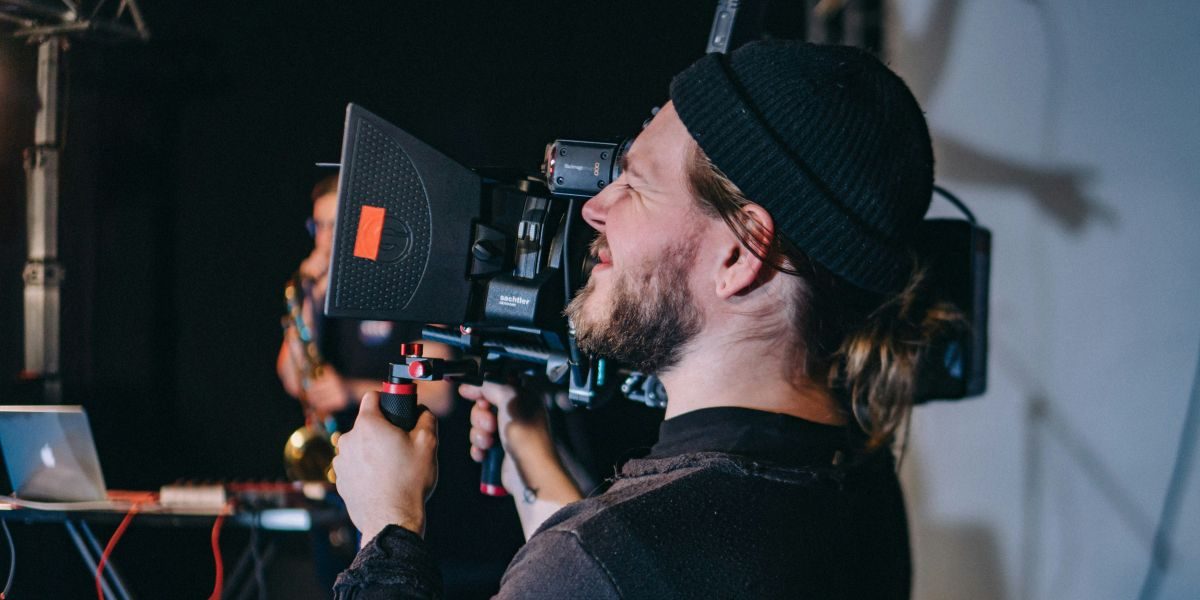By: Anastasia Kyrychenko
How Mobile-First Filmmaking and Portrait Mode Video Are Reshaping the Entertainment Industry
Filmmakers are increasingly exploring vertical formats to meet changing audience preferences.
In an industry defined by tradition, a significant shift is underway. “Vertical” cinema—films shot in 9:16 portrait orientation rather than traditional landscape—has moved from being an experimental format to becoming an important aspect of the media landscape. According to a report by Grand View Research, the overall video streaming market was valued at $473.39 billion in 2022 and is expected to continue expanding, with vertical formats emerging as a growing segment within this growth.
What is vertical cinema? Vertical cinema refers to videos and films specifically created for portrait orientation (9:16 aspect ratio) rather than the conventional landscape (16:9) format, optimized for viewing on smartphones and mobile devices without the need to rotate the screen.
“The data suggests a clear shift in consumption patterns,” says media analyst Jordan Chen of MediaTrends Global. “According to Cisco’s Visual Networking Index, mobile video consumption has been rising steadily year over year, with smartphone users showing a preference for content that fits their device’s natural holding position.”
This shift reflects a simple reality: our relationship with screens has evolved. As smartphones have become our primary entertainment devices, our viewing habits have changed as well. Traditional filmmakers initially resisted portrait mode video production, but audience engagement metrics and shifting attention spans have made this change more relevant.
The Vertical Revolution: Smartphone Cinema Takes Center Stage
What began as a trend in Asian markets has now gained traction in Hollywood. Chinese production houses were early adopters of the portrait video format, producing “micro-dramas”—vertically-shot episodic content typically running 3-10 minutes per episode. According to South China Morning Post, platforms like Douyin (TikTok in China) have experienced strong growth in vertical content consumption.
American studios have also embraced the trend. Warner Bros. Discovery reported in their 2023 financial statements significant investments in digital-first content. Similarly, Netflix has allocated resources to adapt its content formats, as noted in their shareholder letters.
“People’s viewing habits are shifting rapidly,” explains veteran producer Melissa Harrington. “According to Nielsen’s State of Play report, streaming platforms are capturing a larger share of viewing time, with short-form vertical content growing in popularity, especially among viewers under 35.”
Actors like Alina Varakuta Embracing the New Format of Portrait Orientation Filmmaking
For actors, vertical cinema presents both challenges and new opportunities. The format requires different technical skills but opens doors for performers who may have previously been overlooked by traditional studios.
“The pace of vertical production is quite different from traditional filmmaking,” says actress Alina Varakuta, who recently completed work on the vertical drama Shoot My Heart, My Mafia Boss. “We shoot many more scenes daily compared to a conventional set. It’s demanding but also exhilarating.”

Varakuta, who transitioned to vertical content after training in traditional theater, notes that the constraints of the format create unique creative opportunities. “With less time to prepare before arriving on set, you develop a certain mental agility that ultimately makes you a stronger performer.”
According to casting director Rebecca Morris, this change signals an industry shift. “We’re seeing more first-time screen actors booking vertical roles. The medium tends to favor performers with social media experience and an intuitive understanding of smartphone-based storytelling.”
The Future of Vertical Video and Portrait Mode Filmmaking
The vertical revolution reflects broader trends in media consumption. According to Pew Research Center, the majority of Americans now own smartphones, with younger demographics showing particularly high rates of mobile video consumption.
Vertical Video Performance Metrics Comparison

Research from Google’s User Experience studies suggests that users hold their phones vertically the majority of the time, which creates a disconnect with landscape content that requires rotation.
Varakuta, like many performers exploring this space, believes vertical content will continue to grow in prominence. “I believe vertical content will steadily gain more attention. We’re already seeing smart TV manufacturers like Samsung experimenting with rotating screens that can shift to portrait mode.”
New Opportunities in a Changing Landscape for Mobile-First Filmmaking
Vertical projects often have different production dynamics compared to traditional films. According to the Independent Film & Television Alliance, lower barriers to entry have encouraged the growth of production companies specializing in emerging formats.
“The human brain naturally resists unnecessary actions,” explains digital psychologist Dr. Hannah Williams. “When content matches how we naturally hold our devices, the friction disappears, as supported by research published in the Journal of Consumer Research.”
With Motion Picture Association data indicating shifting priorities across the industry, this trend appears to be gaining momentum.
For emerging talents like Varakuta, vertical content provides both creative fulfillment and professional opportunity. “Cinema has always adapted to technological change,” she notes. “From silent to sound, black-and-white to color, standard to widescreen—vertical is simply the next chapter in portrait mode filmmaking.”
As more performers, directors, and studios embrace vertical storytelling, the line between traditional and mobile-first content continues to blur. What once seemed like a passing trend is now becoming a fixture in the entertainment landscape.
“In a few years, we won’t even be having this conversation,” Varakuta predicts. “Vertical won’t be new or controversial—it will just be another tool in the filmmaker’s toolkit. And I’m excited to be part of this transformation.”
FAQ About Vertical Cinema and Portrait Mode Video Production
Q: What equipment is needed for vertical cinema production?
A: While specialized equipment exists, many productions use standard cameras rotated 90 degrees with modified rigs, or high-end smartphones with cinema lens attachments.
Q: Which platforms specialize in vertical content?
A: TikTok, Instagram Reels, Snapchat Spotlight, and YouTube Shorts lead in short-form vertical content, while newer platforms like VerticalFlix focus on longer-form vertical entertainment.
Q: How does vertical content affect advertising?
A: Vertical video ads show significantly higher completion rates and engagement compared to landscape formats on mobile devices, according to recent marketing research.
To see Alina Varakuta’s latest projects in both vertical and traditional cinema, check out her full filmography on IMDb.
This article was last updated on April 18, 2025. For the latest trends in vertical cinema and portrait mode filmmaking, subscribe to our weekly industry newsletter.

















